When working as an educator in the early childhood profession, documenting child observations is simply a means of gathering information about a child to inform your programming and ensure you are planning appropriate activities, strategies and experiences for each individual child and also the whole group.
Observing is obviously the act of looking and watching, but in our profession, we need to take that one step further. It also encompasses the skills of listening, questioning, reflecting and documenting what we actually see and then interpreting succinctly in order to identify and support a child’s strengths, needs, interests and development.
Educators use the information provided by child observations as just one way to support and challenge a child’s development and individual learning journey. An ‘observation’ can take many different forms and not all will suit every early learning service, educator, child or play experience. I know this can easily become a source of confusion and frustration for educators as some are told to use specific methods like learning stories only and others are told to use set templates or a digital app that the entire service is using.

How many child observations do educators need to do?
In my opinion, the most meaningful observations (and also most useful to both educator and child) are those the educator feels confident using and can use to link to their forward planning and day to day activities and routines with the children.
Ideally, leaders and coordinators will support their educators by ensuring they are using a flexible system that works well for their skill set and service type. Observations do not need to be limited to one type of form, template or app and a combination of a few can work very effectively and meet different needs.
If you work under the early years learning framework (EYLF) in Australia, please know that there is no regulation that states you need to use a specific documentation format and with what frequency.
The frequency of your observations will depend upon the number of children in your care, the environment you work in and your centre or scheme expectations – there is no set magical number for compliance.
Try and think about your observations telling the child’s story and how often you might need to add observations and reflections to keep the story rolling along without big gaps!! An observation here and there or because you ‘have to meet your weekly obs quota” is again a waste of your time and does nothing to support the child on their learning journey.
What you do need to demonstrate with the majority of early years frameworks and guides is written evidence of a planning cycle which can show you are observing, noticing, recording, planning and evaluating. There also needs to be written evidence of children’s progress towards the Learning Outcomes.
Once you have your own system in place it’s not as time-consuming as it seems I promise. To put a system of regular observing and documenting in place though you first need to understand what tools or templates to use - what will suit you the best or have you already been told to use a certain type?
If you would like some help remembering the different observations formats I mention throughout this article and how to best use them in your own planning cycle documentation you can download a quick guide here.
What Child Observation Template do educators have to use?
There are many types of observation styles and all have something to offer when used in the right context. You will find you get the most useful results from exercising your judgement and using the method that you understand the best and that also suits the children you have in your care.
You don’t just need to do learning stories or anecdotal observations or checklists. This is a bit of a myth and unfortunately, educators in both centre and family day care settings are often told they can only record their observations in the style deemed necessary by service management and this is where many educators become overwhelmed and resentful - because the system they are told they must use is not very flexible and guidance and training around how to use it effectively is lacking.

If you tell a story make sure it is adding to a child’s journey not just stating the obvious. Make it work for you – I like to take photos while still engaging with the children in their play and then come back later at rest time or after hours to review and add text if necessary to complete the story. An observation does not always need text.
The key is to try a variety of styles to build a picture of the child, a group of children and whole of service to inform and support your planning.
Keep in mind that no matter the style you use you should always include the following information if possible...
It’s helpful to you as an educator and the children you are observing to incorporate a variety of different assessment and observation methods – remember there is no specific Australian regulation about what app, form, template or system you have to use and you don’t need to limit yourself to one format either!
If this is something your leader or coordinator is asking you to do then perhaps initiate a conversation around why you are being asked to only use one type of assessment tool and if there is an option for you to use a couple instead of one.
Below you will find an example of my photo observation templates which I have probably used the most frequently over the years because they best suit my programming style. They are simple, the photos usually tell the story and are the main focus – the text I add incorporates the language of the EYLF and the child’s voice. There is no need to write to much, a few lines are sufficient – just make sure it is meaningful. if you feel these types of simple templates would work for you can find them in my resource shop and download the pack HERE.
Easy Methods for Observation Recording & Assessment
As an Educator, you can actually choose to use a little of everything to capture the children’s learning if you need to…just make sure it is significant and not just there to fill a portfolio, show a photo in an app or to check off some boxes on a template! You might settle on one template or style or you might use 3 or 4. Just make sure whatever you use is useful!
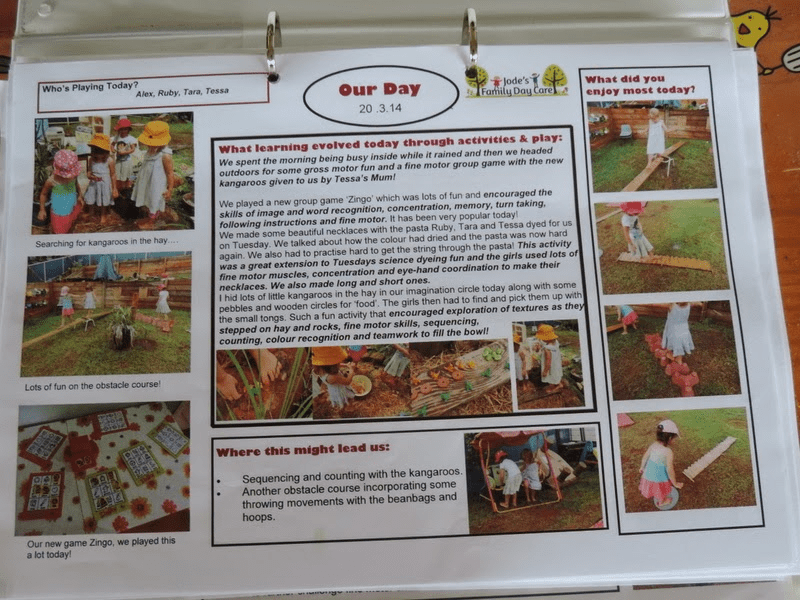
You need to take the time to experiment a little and work out what suits you and how you work rather than just automatically using what you have seen work for others. Some observation formats also suit certain experiences, activities and conversations better so it can take a little trial and error and work experience before you fully understand this and how best to record your observations.
The idea of documenting observations for children’s individual records is so that you can identify and note strengths, interests and goals. There are many ways of doing this and I have shared a few suggestions for you to consider below – I have split them into two categories to show how various forms of observation and documentation can give you different levels of information to assess learning and extend with.
Some you could combine to get a better overall picture e.g. – ideally, you would not just use a developmental checklist on its own as there is not enough background information – you might add it to another observation format like an anecdotal record to help you identify the learning outcome area you want to focus on and give you a clearer picture.
Other types of observation can provide you with all the detailed information you need to further analyse and extend as you forward plan. For example, a running record or learning story will no doubt give you enough information to move forward with on its own.
Remember that you don’t need to do all of the things, all of the ways, all of the time to share the story of a child's learning journey meaningfully!! You should also aim to keep them simple and easily understood by parents so that you can effectively communicate the learning that is taking place. So, leave out all the complicated outcome numbers, codes and waffly words and just record what you see as best you can!
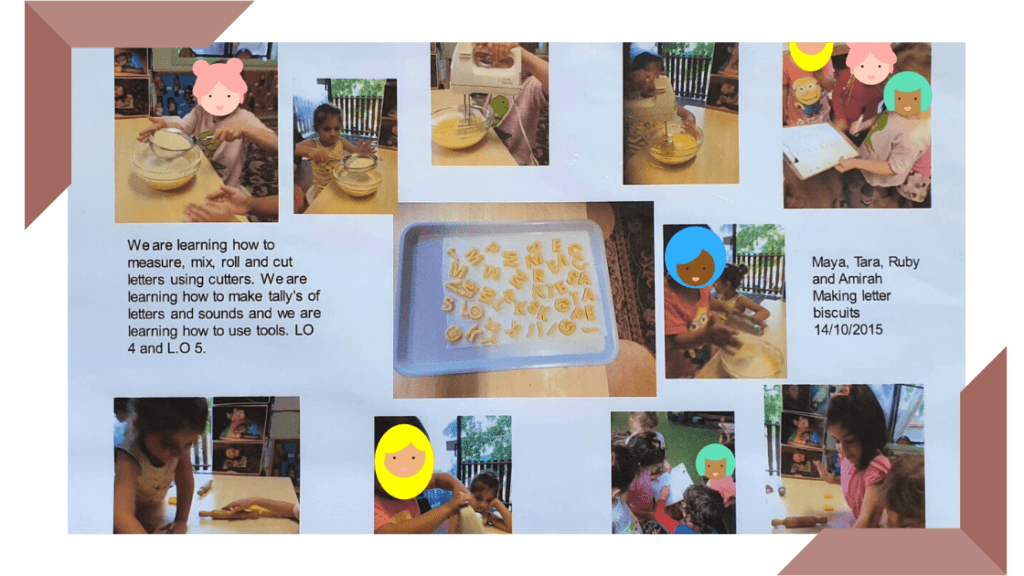
What child observation methods can educators use to record quick, brief observations?
Short sticky note jottings
I like to always have a pad of sticky notes in my pocket or close by on the sign-in table. Quick and unobtrusive to just add a few dot points then stick straight away into your daily diary or onto a form like the one in my baby and toddler planning toolkit.
Parent Communication Methods
Our Day Forms, My Day Forms, parent communication booklets, photo collages, the information saved to a family’s folder in the cloud (read more about how I set up a digital portfolio for my family daycare families using dropbox here)
Daily & Weekly Reflections
Diary notes, reflections on the program, environment, group dynamics, what worked or didn’t and why, family input, changes in behaviour or routines etc.
Communication Station
Incorporate information compiled from a dedicated space and system for both educators and parents to write notes about current interests and learning – another way I like to incorporate either Dropbox or sticky notes and a special book that parents can stick their note straight into for you to review later and you can also reply.

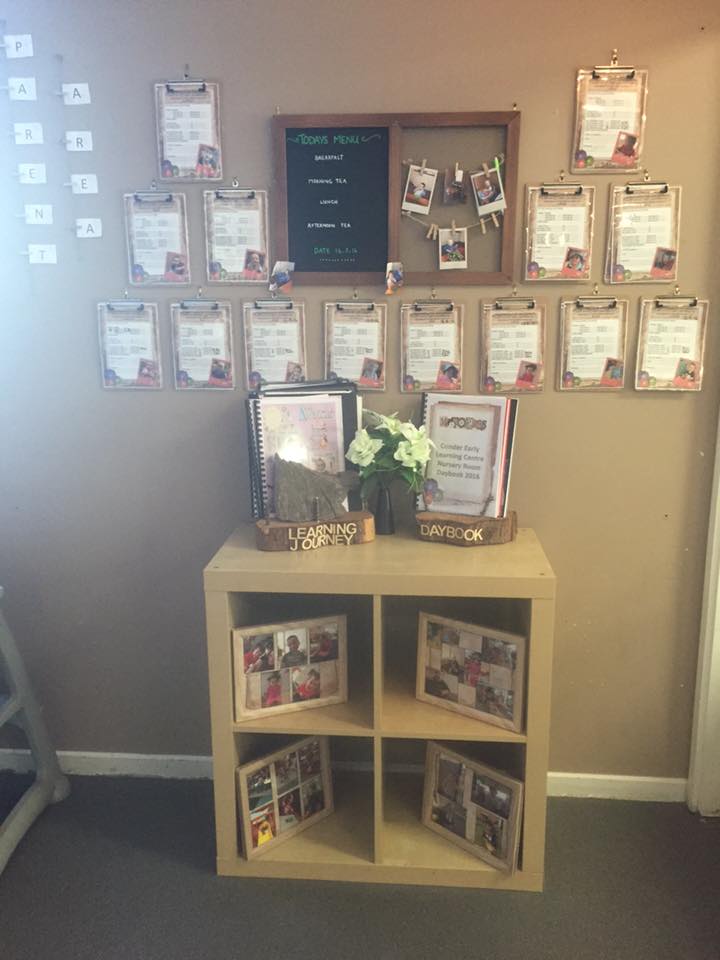
Photo Source - Educator Sarah Hart
Developmental Checklists
some educators and consultants prefer not to use these as a tool (which is definitely their right as we don’t need to use all possible forms of observation remember!) but I do feel if checklists are used as a simple guide while always keeping top of mind that all children develop differently and reach milestones on their own timeline; then they can be a valuable source of information regarding a child’s progress against the common developmental milestones. It's up to you as an educator to decide what the information you collect tells you about the child as a whole! That is where your analysis and additional assessment sources come in.
Developmental checklists are made up of some common milestone targets that are often reached by children within predictable age ranges…but they are not a ‘must do by…’ list!
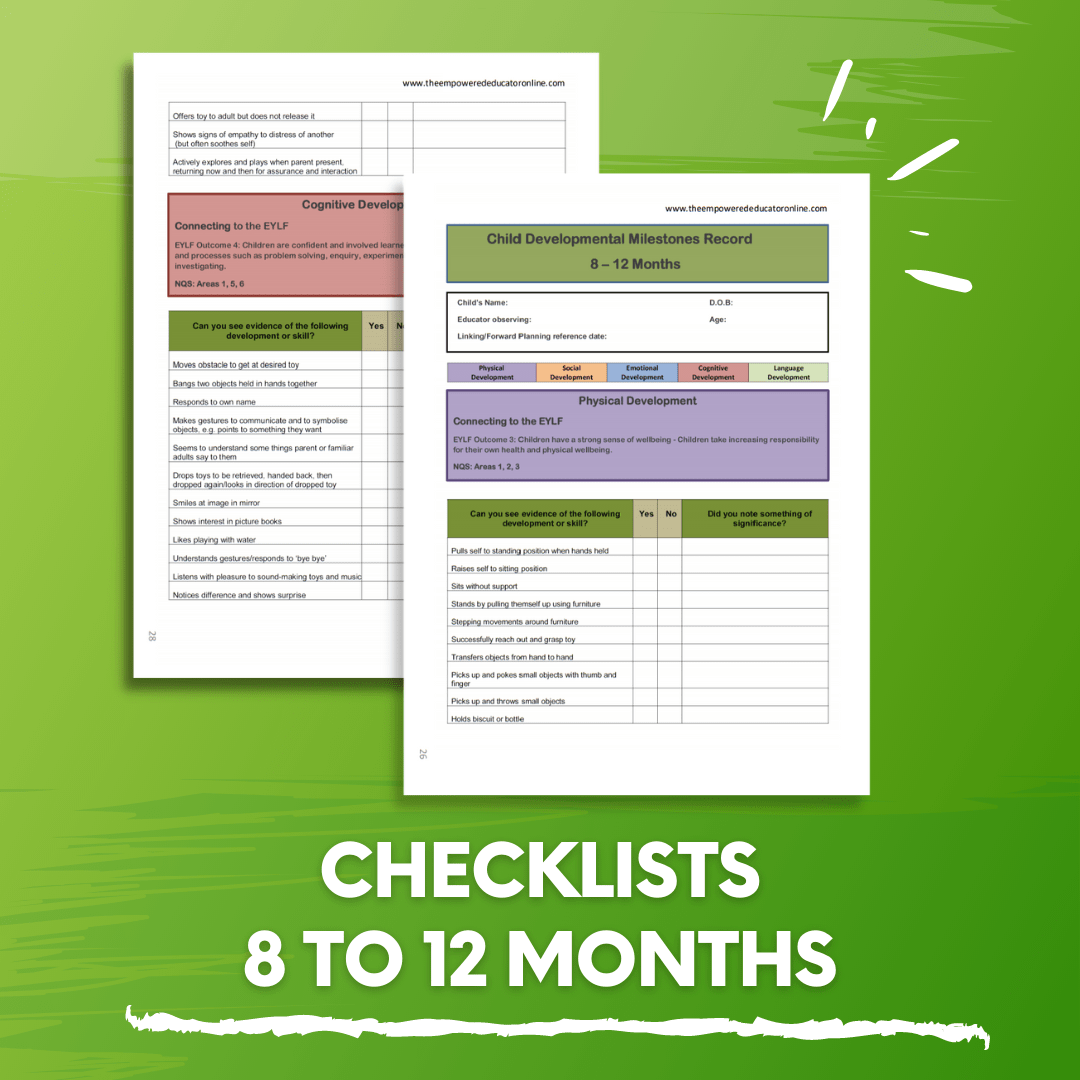
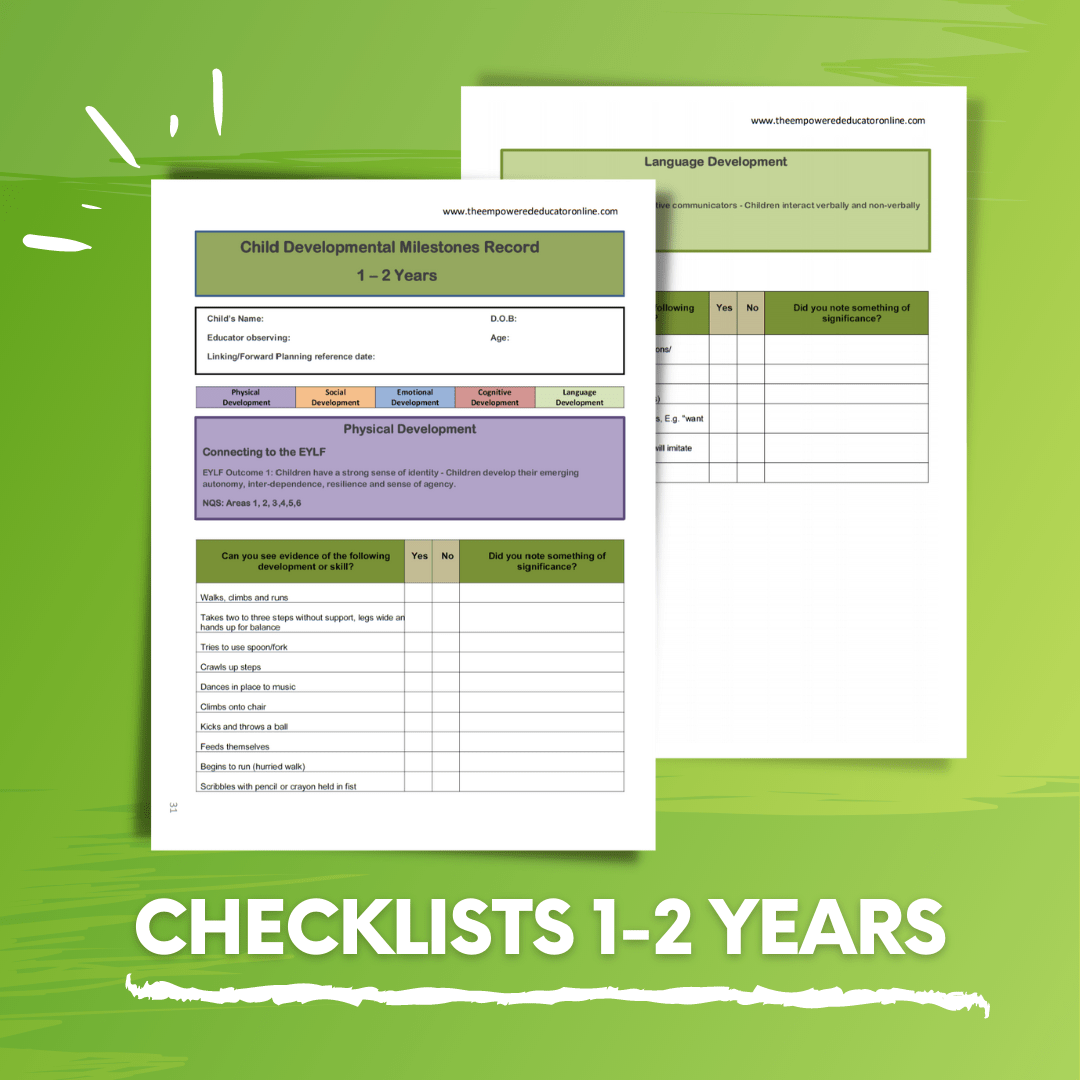
Anecdotal Records
This is the format I have used most often over the years. They are usually a short and simple story of the play and actions you saw but written in the past tense. I like to combine this method with the sticky note jottings or reflections because I can unobtrusively make a few dot points here and there and then tell the story in full when I have the time to sit and focus. This allows you to stay in the moment with the younger children. You write the observation from the point you began observing the experience to the end of that particular event.


Children’s Work Samples
Use mark-making, drawings, photos of projects – group or individual, construction, crafts, photos of group play or interactions with educators, messy play, sensory play etc. Collect evidence of the work and then add a little text description of what you saw occurring as the event happened or for younger children only just beginning to talk or verbalise with sound, you might record their exact words/sound. You can then link to relevant learning outcomes and milestones.

Apps & other digital devices
This category consists of any audio, video, family communication apps etc. that you might use or yoiur service requires you to use.
Not sure how you are supposed to remember all of these and want something to refer back to? Download the ‘Child Observation Methods - Quick Guide’ HERE.
Yes you will need to record more comprehensive or ongoing observations and assessments at times - but how?
Photo stories of play and learning
Compile photos of a child engaged in an activity or experience an add a few lines to describe what you saw happening. I find this method particularly effective to help you communicate the learning and progress taking place from those ‘simple’ everyday play moments to help families understand that their child’s routines, play and interactions are important at home and during care. I like to keep the text very brief and easy to read and insert the photos into a document or collage that help to show the steps or changes that took place. You could add a few more


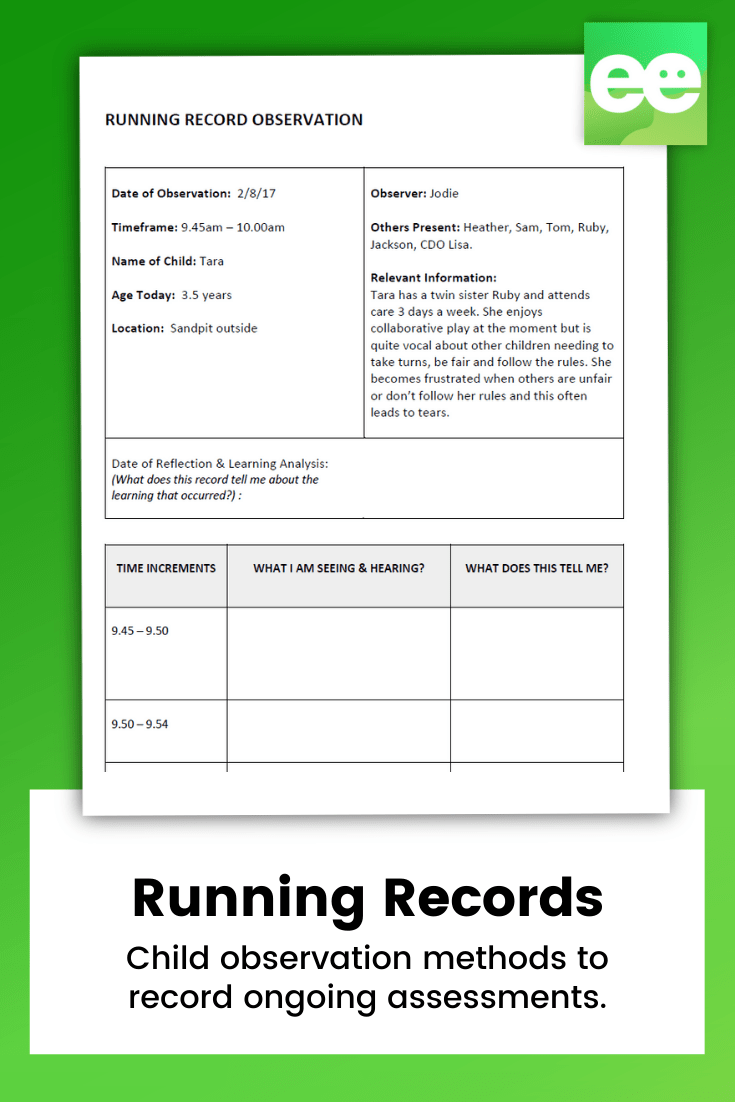
Running Records
In this format, educators write in the present tense and include detailed information about the event as it unfolds recording the child's exact words & actions.
Use running records to help you better understand behaviours & explore developmental skills or challenges emerging.
Aim to record your running records in a set time period.
Learning Stories
Often seen as a more time-consuming method to record an observation as they tend to be lengthy text descriptions accompanied by photos to tell a story - not only about the moment and experiences taking place but also including an educator’s input and analysis on the learning that has taken place in the moment and what the child can do (not what they can’t).
However, they can be a story about just one event or you can add a little here and there to them over time which makes them a useful tool for observing younger children. A bit like a learning journal or portfolio – but on a smaller scale!
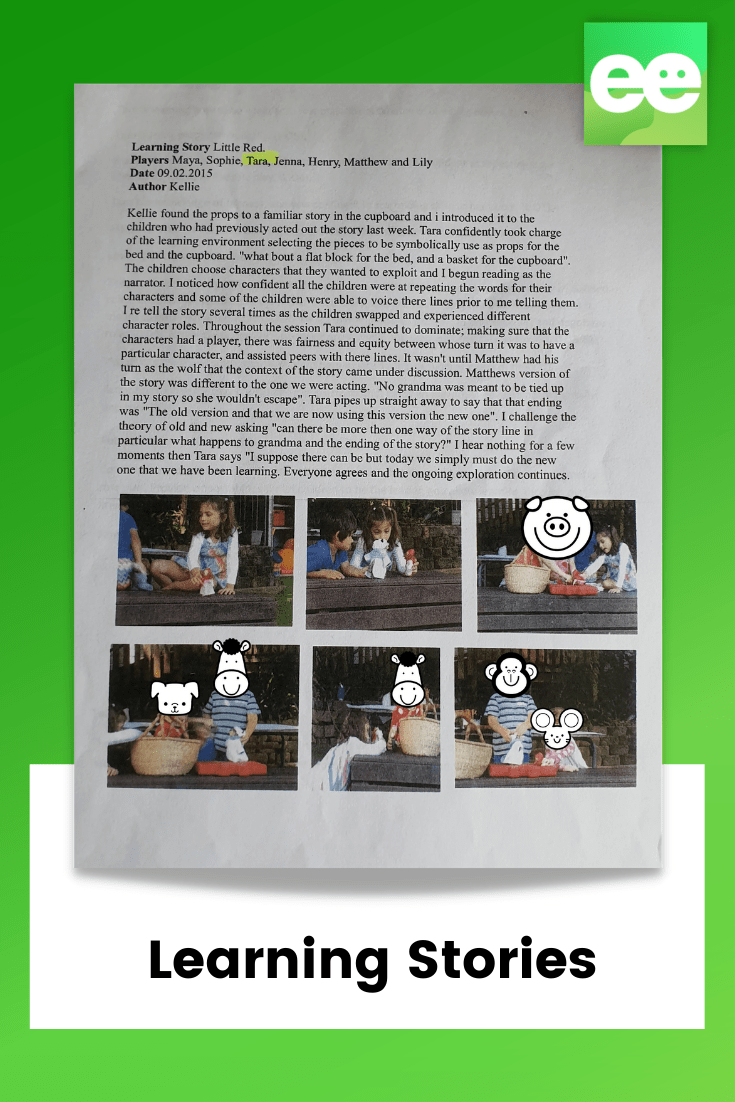
I personally have not used learning stories very often as I think it is very easy for the story to become (unintentionally) a little too subjective unless the educator knows the child extremely well already (in regard to family life, culture, behaviour, wellbeing, social skills etc) and is confident in their skills and the process of writing observations.
However, they can be a good option for families as they are usually easier to understand as they are in a storytelling format – but then, remember they still need to have the time to look through and read. Also, a good option to help educators include a few brief observations taken over a longer time frame into a final more comprehensive assessment.
As long as the educator writing the observation is mindful of their own possible subjectivity or making inappropriate assumptions on the child’s actions because of their own values or feelings, learning stories can be a useful method for assessing learning.
To simplify and summarise... all you need to remember is that the observations you are recording must be meaningful, they must be specific, and they must support you to support the child’s learning journey and their steps forward. If it doesn’t, then you have wasted your time and the child in your care hasn’t benefited either. It really doesn’t matter what template you use…just use it effectively!
If you would like to reflect back on this information make sure to pin it so you can find it easily again!

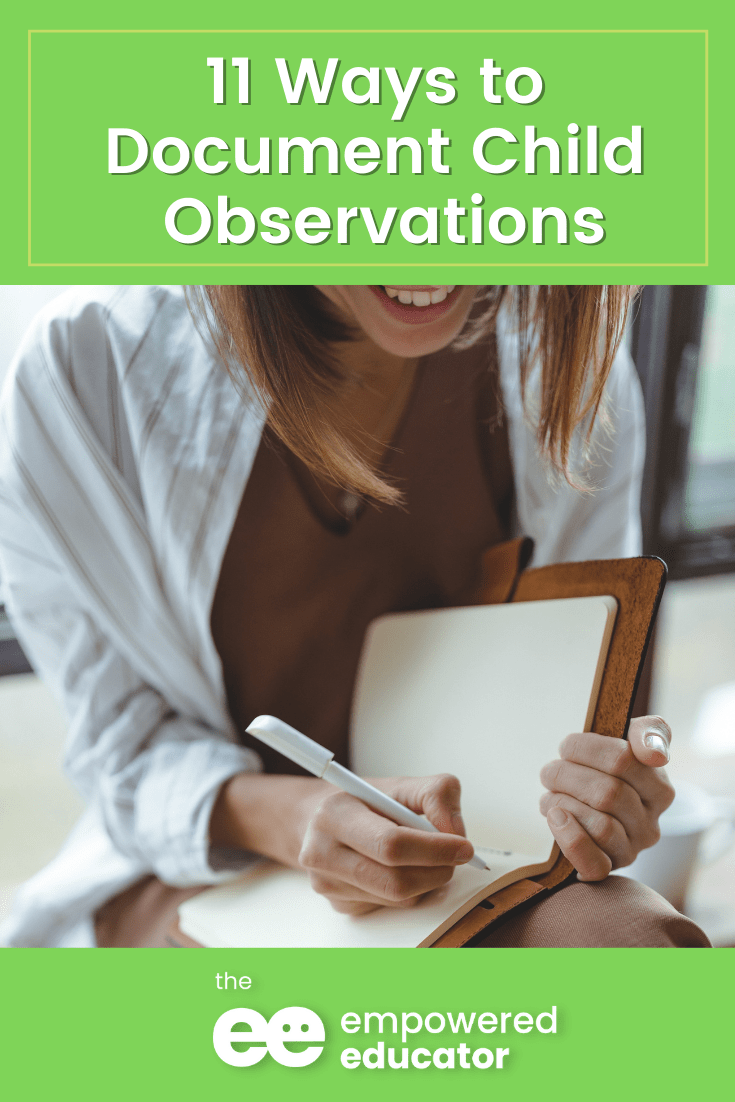
A Little About Me

Jodie Clarke is an early childhood professional supporting educators who want and need to stay passionate about the work they do! She has 30 years hands-on experience in the early childhood and human services sectors across many different roles.
Jodie is mum to 3 in Australia and has already helped thousands of educators with their work through her popular blog posts, activity ideas, online training and e-books.
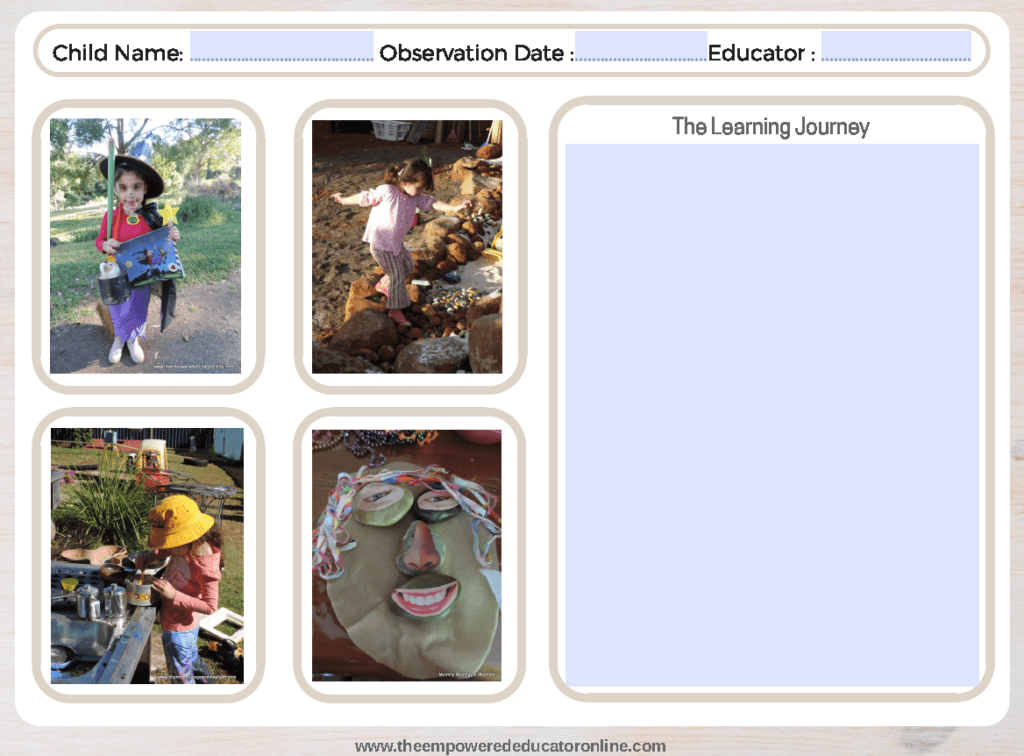
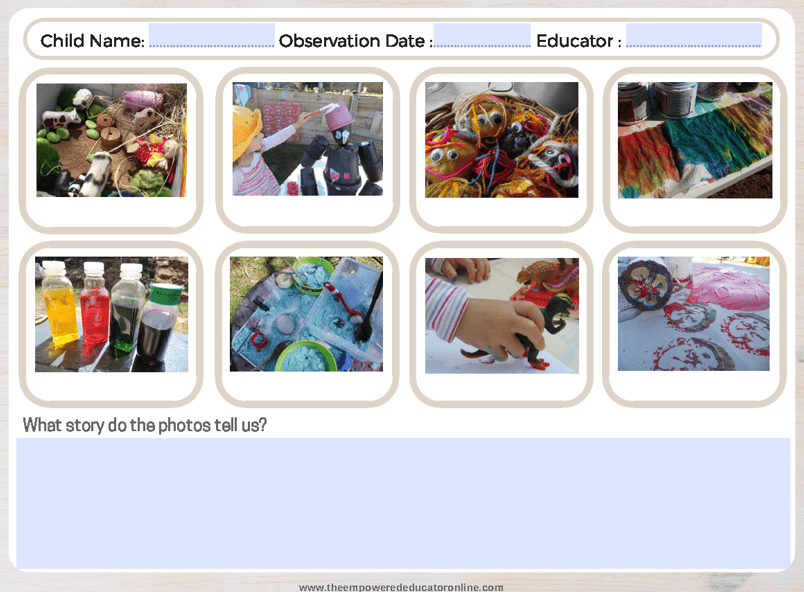
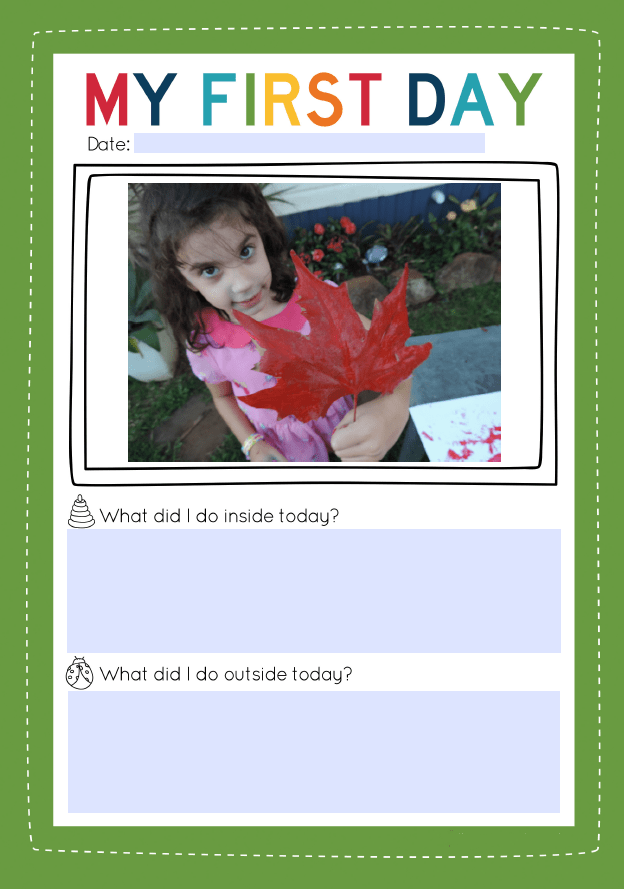

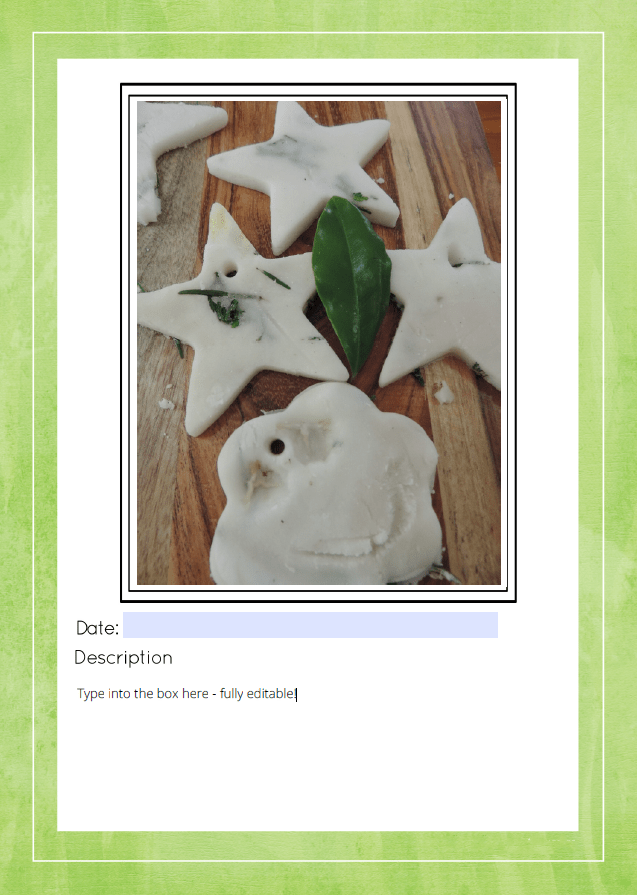
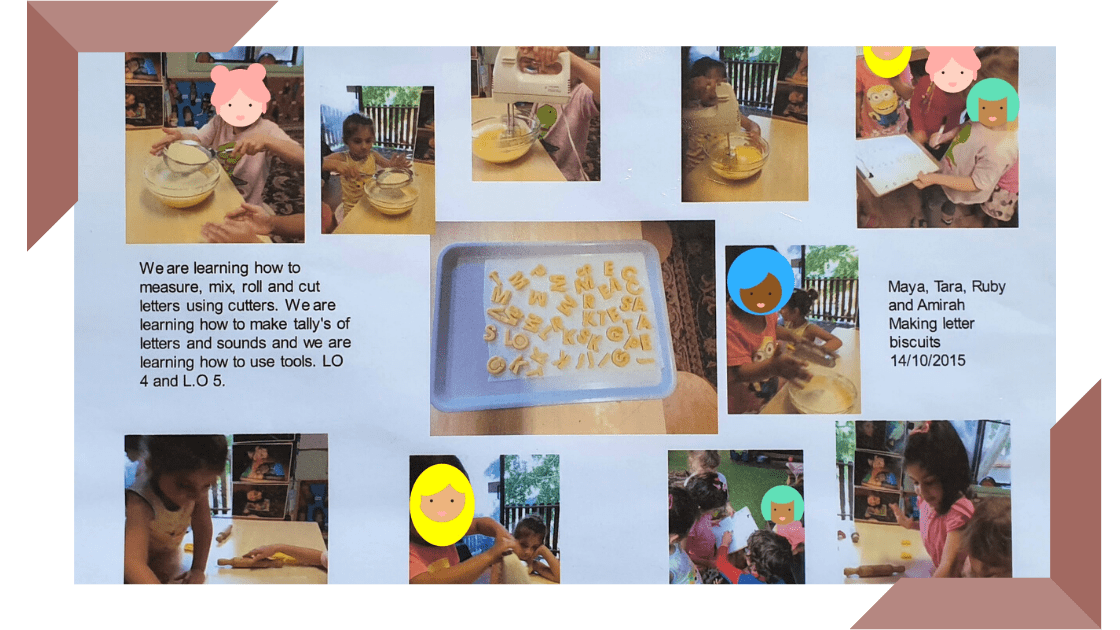

i always read your stuff. thumbs up for you and your team!
I love reading your information allways is so good thank you jodie and your team , just a question do you work with Aboriginal Storie and how to put it into practise .
Have provided an amazing online course about programming and online observation as it was very useful to use your notes that you have provided, to teach my Diploma of Early childhood. Thankyou, Jodie
This is a brilliant post, thank you for sharing these great tips. I think you are right with 11waystowritechildobservations. I am sure many people will come to read this in future.Thanks for this wonderful content.
I absolutely love reading your material. I have learned so much!
Lovely thanks mam all the material is quite informative and beneficial for me as I have recently finished my certificate 3.
Oh my gosh I’m currently doing my certificate in early childhood education and this has been so insightful and helpful. I’ve added it to my actual desktop screen. Thank you so much
Very helpful and useful 🥰